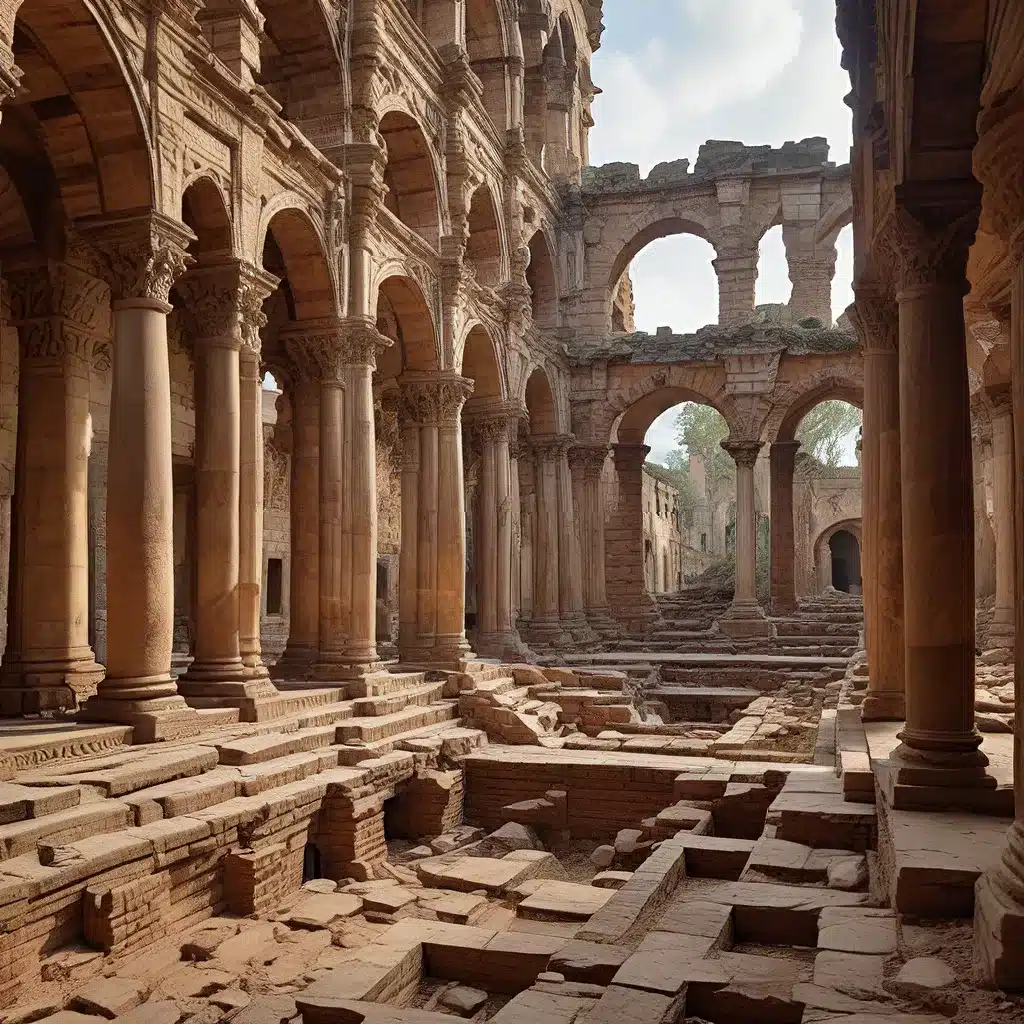
Exploring the Ancient Civilizations and Forgotten Wonders of the World
The story of human civilization is etched in the architectural wonders that have stood the test of time, from the towering pyramids of Giza to the intricate temples of Angkor Wat. These monumental structures not only serve as reminders of our ancestors’ ingenuity and creativity but also provide a window into the rich cultural and historical tapestry of bygone eras.
Uncovering the Secrets of Rome’s Buried Treasure
As the adage goes, “Rome wasn’t built in a day,” and truer words have never been spoken. The eternal city is a living, breathing palimpsest, where the past and present coexist in a captivating dance. Beneath the bustling streets and iconic landmarks, Rome’s archaeological landscape is a veritable treasure trove, revealing layer upon layer of history.
The construction of Rome’s newest subway line, Metro C, has been a testament to the city’s rich heritage and the challenges of preserving it. Every excavation and ventilation shaft has unearthed astonishing vestiges of the city’s past, from ancient aqueducts and military barracks to the legendary school founded by Emperor Hadrian. The Superintendence for the Archaeological Heritage of Rome has meticulously documented these finds, ensuring that the city’s history is not lost to the march of progress.
One particularly remarkable discovery was the Athenaeum, a monumental school that was uncovered during the construction of a station at Piazza Venezia. This ancient institution, established by the Emperor Hadrian, served as a hub for learning and intellectual discourse, attracting scholars and poets from across the Roman Empire. The sheer scale and grandeur of the Athenaeum’s remains have left archaeologists and historians in awe, shedding new light on the educational and cultural landscape of ancient Rome.
Preserving the Architectural Legacy of the Past
The challenges of balancing modernity and heritage are not unique to Rome. Cities around the world grapple with the delicate task of preserving their architectural marvels while also accommodating the demands of urban development. In recent years, a growing appreciation for the value of these ancient structures has led to innovative approaches to their conservation and integration into modern landscapes.
Across the globe, archaeologists and preservationists are uncovering forgotten architectural wonders, from the intricate cave dwellings of Cappadocia in Turkey to the towering stone structures of Machu Picchu in Peru. These sites, once lost to the ravages of time, are now being meticulously restored and showcased to the world, captivating the imagination of both scholars and the general public.
One particularly inspiring example is the ongoing restoration of the Ajanta and Ellora Caves in Maharashtra, India. These ancient rock-cut temples and monasteries, dating back to the 2nd century BCE, are renowned for their breathtaking murals, sculptures, and architectural ingenuity. Through a collaborative effort between the Archaeological Survey of India and international organizations, these cultural treasures are being painstakingly preserved, ensuring that their stories continue to be told for generations to come.
Embracing the Creative Potential of Ancient Artifacts
The significance of ancient architectural marvels extends far beyond their historical relevance. These structures and artifacts have the power to inspire creativity and foster innovative approaches to education and learning.
Educators are increasingly recognizing the value of incorporating ancient stone artifacts, such as cave drawings and elaborate carvings, into their teaching methodologies. By encouraging students to explore and interpret the symbolism and narrative depicted in these ancient objects, they are cultivating critical thinking, problem-solving, and a deeper appreciation for the cultural heritage of humanity.
Furthermore, the integration of technology and virtual experiences has revolutionized the way we engage with these ancient wonders. Students can now virtually explore historical sites, recreate architectural marvels, and even bring the narratives of ancient cave drawings to life through digital storytelling. This dynamic approach to learning not only sparks the imagination but also fosters a stronger connection between modern students and the rich tapestry of our shared past.
Uncovering the Mysteries of the Past
As we continue to delve into the architectural marvels of bygone civilizations, we uncover not only the physical remnants of the past but also the stories, beliefs, and innovations that shaped the course of human history. From the towering pyramids of Egypt to the intricate stone carvings of Khajuraho, these ancient structures serve as a testament to the boundless creativity and ingenuity of our ancestors.
Through the lens of archaeology and preservation, we gain a deeper understanding of the cultural, social, and technological advancements that defined these ancient societies. The Lost Kingdoms website offers a wealth of resources for those interested in exploring the architectural and archaeological wonders of the past, providing a gateway to the captivating stories that lie buried beneath the surface of our world.
As we continue to unearth the secrets of the past, we are not only preserving our shared heritage but also cultivating a deeper appreciation for the creative potential of the human spirit. The architectural marvels of antiquity serve as a constant reminder that the boundaries of what is possible are constantly being pushed, inspiring us to dream, explore, and forge new paths in our own time.


